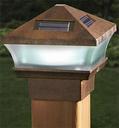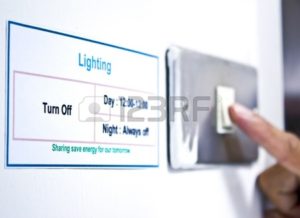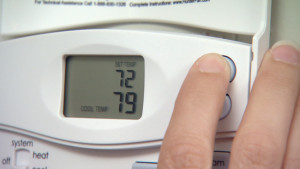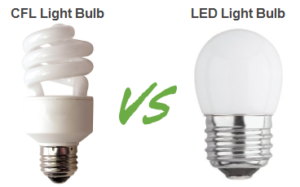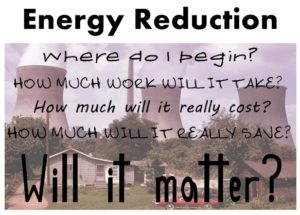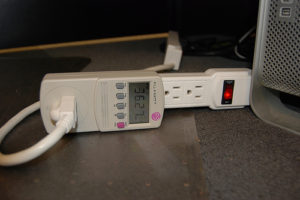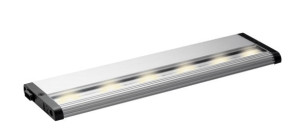 LED Light bulbs are very expensive and we were wondering how can a consumer possible justify spending $35 per bulb when an incandescent bulb costs less than a dollar and fluorescent bulbs cost around $4? With such a difference in price we did not think that the ROI would be very good and if these bulbs did save you money, it would take a long time for the payback to work. In fact, I might not even own the house by the time they pay for themselves!
LED Light bulbs are very expensive and we were wondering how can a consumer possible justify spending $35 per bulb when an incandescent bulb costs less than a dollar and fluorescent bulbs cost around $4? With such a difference in price we did not think that the ROI would be very good and if these bulbs did save you money, it would take a long time for the payback to work. In fact, I might not even own the house by the time they pay for themselves!
I discussed this with a friend of ours and he had the same concern. In fact he said that the LED bulbs will last many years before they stop working and he would be long dead, so why would you invest in these kinds of bulbs. A bit of stark reality, but this is another perspective to take into account.
How Long Do LED Light Bulbs Last
Regular incandescent bulbs will last about 1200 hours on average, while a fluorescent bulb will last 10,000 hours and a LED Light is supposed to last 50,000 hours. We have 3 lights at the front of our house which are on all night long. On average they may be on for 10 hours a night which means the incandescent bulbs will only last 120 days, the fluorescent will last a long longer up to 1000 day or 2.7 years, while the LED’s will last 14 years.
What is My ROI
We plugged these numbers into a ROI calculator which assumed the cost of electricity was $.09 / Kwh, the lights were on for 10 hours per day, there were 3 lights, and the cost of the LED Lights were $35 a piece. The results were quite interesting over a period of 1 year.
Incandescent bulbs are going to cost $121 to operate the bulbs while the LED Light would cost $7.72 which is a huge savings. Over a 10 year period this amounts to $1113 in cost savings taking into account the cost to operate and to purchase replacement bulbs.
florescent bulbs cost a little more to operate on an annual basis at $14.58, while the savings over 10 years is lower around $900. LED’s are shatter proof and do not contain mercury which is a huge concern for pollution issues and safety.
Switching To LED Lights
Most stores still sell incandescent bulbs, however they are reducing stock significantly as time moves on. There is a gradual shift from fluorescent bulbs as well to LED’s. Fluorescent have come down in price a great deal over the last few years. We expect that LED’s will also come down in price as they are mass produced.
I would consider switching to LED’s even with the high cost, for my outdoor lights since we keep them on all night long. They will cost more initially. However they will last much longer as well. No maintenance is needed and they do not generate heat.
For rooms inside our home, I would only switch from fluorescent lights for lights that we use a lot in rooms were the lights may be on for more than 5 hours a day. This eliminates most rooms except for the family room and kitchen. Next time I need to replace some lights, which are all fluorescent lights now, I will strongly consider the LED lights. As they come down in cost, I will reconsider this approach. Right now it would cost far too much to replace the bulbs I already have.
LED Light Calculators
Another calculator looked at the cost to light a room for 50,000 hours. Which is the length of time a LED is supposed to last. They compared the operating cost, plus the cost of the bulb with the same operating costs for the fluorescent and incandescent bulbs for 50,000 hours. The cost of replacement bulbs were factored in since they only last 10,000 and 1,200 hours respectively.
The cost to operate these bulbs over 50,000 hours including the cost of the bulbs was:
- Incandescent : $352.50
- fluorescent : $89.75
- LED : $85.75
These are significant savings and one that consumers should look at if you still have regular incandescent bulbs. It just makes so much sense to switch now to the more energy efficient bulbs.
Comments and thoughts are welcome. Spam comments are auto deleted. For more information about LED lights, click here.
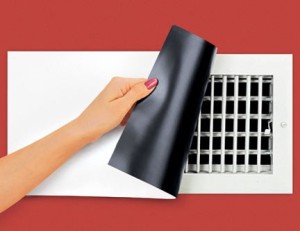 The answer to the question, do you need a cold air return vent in each room, is no. However, it is important that the flow of air in your home is efficient. Hot air comes into each room through the hot air registers, usually located under a window. The hot air heats the room and rises to the ceiling, pushing cold air towards the floor. This is where your cold air return vents should be located. Cold air is drawn into the duct. Rooms with no cold air return vent and closed doors will have less air circulation.
The answer to the question, do you need a cold air return vent in each room, is no. However, it is important that the flow of air in your home is efficient. Hot air comes into each room through the hot air registers, usually located under a window. The hot air heats the room and rises to the ceiling, pushing cold air towards the floor. This is where your cold air return vents should be located. Cold air is drawn into the duct. Rooms with no cold air return vent and closed doors will have less air circulation.
